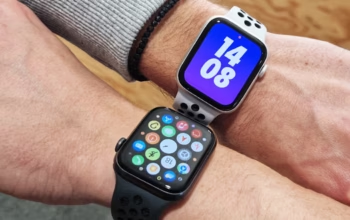Uzone.Id – Voice commerce is becoming a significant trend in e-commerce due to its rapid evolution. As smart speakers and voice assistants like Amazon’s Alexa, Google Assistant, and Apple’s Siri become increasingly sophisticated, consumers are adopting voice-activated shopping at an unprecedented rate.
In order to stay competitive in this new digital frontier, retailers are rethinking their strategies and optimizing their platforms due to this shift.
What are those things that need to be included in their strategies?
The Growth of Voice Commerce
The act of using voice commands to search for products, make purchases, and manage orders is known as voice commerce or v-commerce. According to recent studies, approximately 40% of U.S. internet users now use voice assistants at least monthly.
This growing trend is driven by the convenience and speed that voice commands offer, allowing consumers to multitask and make purchases seamlessly.
Major retailers have already begun to capitalize on this trend. For instance, according to The Future of Commerce report, Walmart has enabled customers to place orders directly through smart speakers, simplifying the shopping process and enhancing the customer experience.
Meanwhile, according to Statista forecast, the number of digital voice assistants will reach 8,4 billion units by 2024. Most interesting part is, consumers’ usage of virtual assistants is high.
Based on Voice Report by Microsoft and Bing in 2019 mentioned that customer adoption of voice technology and digital assistants were 72% of consumers used voice search using digital assistants like Siri (Apple), Alexa (Amazon), and Cortana (Microsoft).
Optimizing for Voice Search

To succeed in the voice commerce arena, e-commerce brands must optimize their websites and content for voice search. This involves understanding how consumers use natural language to describe products and crafting responses that are clear and concise.
Unlike traditional text-based searches, voice queries are typically longer and more conversational. Therefore, retailers need to anticipate common phrases and questions customers might use when searching for their products.
Moreover, voice search optimization goes beyond keywords. It requires a focus on local SEO, as many voice searches are location-based. Ensuring that business information, such as address and operating hours, is accurate and easily accessible can significantly improve visibility in voice search results.
Enhancing User Experience
The rise of voice commerce also requires a shift in user experience (UX) design. Mobile-first design, which prioritizes the mobile shopping experience, is becoming increasingly vital as consumers use voice search predominantly on their smartphones.
Features such as voice-activated navigation, simplified login processes using biometric authentication, and streamlined checkout with mobile payment options are critical for enhancing the user experience.
Challenges and Opportunities
While voice commerce offers numerous benefits, it also presents challenges. One significant concern is the accuracy and reliability of voice recognition technology. Misunderstandings or errors in processing voice commands can lead to frustration and a negative shopping experience. Therefore, continuous improvements in natural language processing (NLP) and machine learning are essential to strengthen the accuracy of voice assistants.
Furthermore, security and privacy issues are paramount. Retailers must ensure that voice-activated transactions are secure and that sensitive customer information is protected. Implementing robust authentication methods and educating consumers about best practices for secure voice transactions can help mitigate these risks.
Looking Ahead
As technology advances and consumers become more comfortable with voice-activated interactions, the adoption of v-commerce is expected to soar. By 2025, mobile commerce, which includes voice-activated shopping, is projected to account for over USD710 billion in sales, representing a significant portion of the e-commerce market.
Retailers who embrace this trend and invest in optimizing their platforms for voice search, upgrading UX design, and ensuring security will be well-positioned to thrive in this evolving landscape.
Voice commerce is more than just a fad; it is a significant change in the way people use technology and make purchases, which is shaping the future of e-commerce. (Yudi)
















